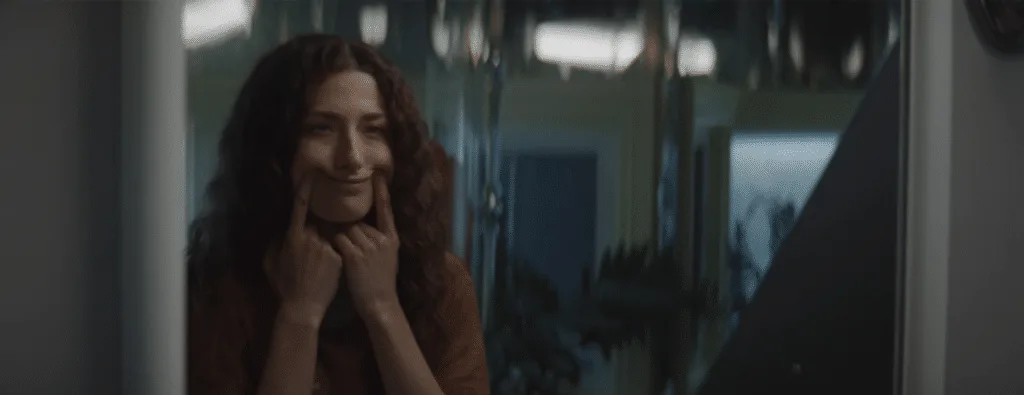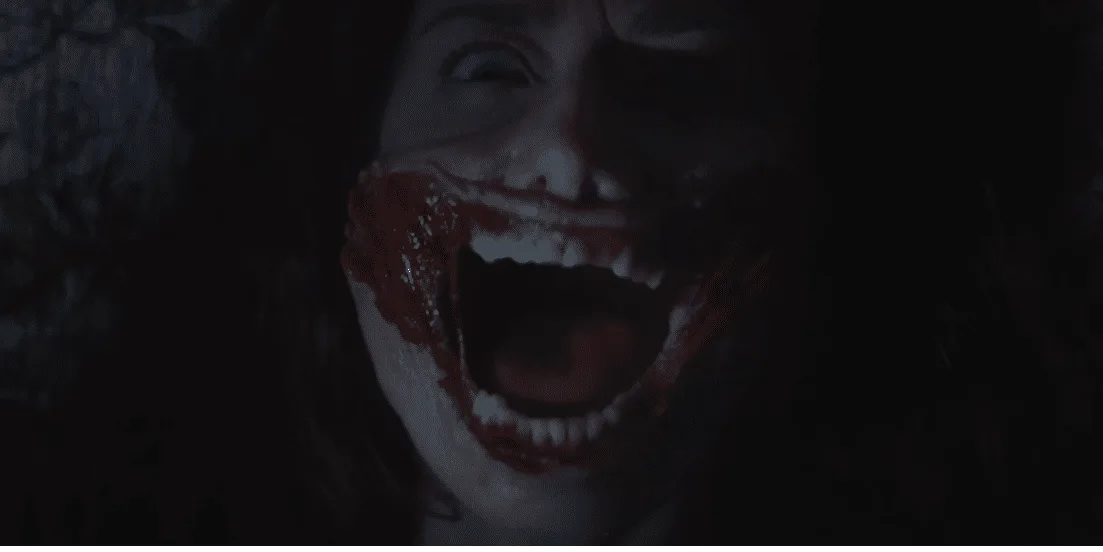
Continuing with Warped Perspective’s interviews with the directors behind ARROW Player’s recent Sharp Shorts, we asked director Joanna Tsanis about her own short film – a very brief, super-focused study of depression, grief and fear. Oh, and it’s a monster film, too. Here’s our conversation about Smile (2021).
Warped Perspective: This is a very brief short film, but it packs a powerful psychological message. How easy or hard was that to achieve, given the short film format?
Joanna Tsanis: It’s funny – the film was initially going to be even shorter. It all started with an idea I had for a horror gimmick – that gimmick being a woman smiling so hard that her face rips off. The original script was less than two pages long and I had planned to submit it to micro-short and 1-minute horror competitions. But when my screenplay was picked up by NYC-based company Zeus Pictures, they suggested I expand it to five pages. That was 100% the right call, and I really appreciated that motivation to develop the gimmick into a full story.
Though it can be a challenge to fit a story’s necessary character development in a 5-6 minute frame, the limitations force you to be more creative. Besides the quick voicemail in the opening, the film has no dialogue. I had to really focus on telling the story of Anna through her surroundings, her movements, and her expressions. It was a challenge, but an exciting one.
WP: The monster in Smile feels very much like a personification of that demand – often made of people who are suffering with depression – to ‘just smile’, whatever they might be feeling inside. Is that a fair interpretation? What did you want audiences to take away from your film?
JT: It is a dark irony. Everyone wants Anna to be happy. Her mom wants her to be happy. She wants to be happy. But the idea of her ever smiling again seems at an impossible distance. That is until her depression manifests into something truly monstrous and gives her that smile she longed for. Her fate is cruel but it is not unheard of. Anyone with a loved one that has struggled with depression understands this.
WP: Did you draw any inspiration for your creature from other films or other works, or is there someplace else that creature came from? It’s a very effective monster!
JT: Hellraiser was definitely an inspiration for the creature design. I wanted the monster to look like it was in pain simply from existing; hence it being wrapped in barbed wire, and the wire pulling its mouth into an outstretched grin.
WP: You’ve stuck very firmly with the horror genre for your films so far – can you tell us why the genre appeals to you so much?
JT: Growing up, I would visit my family in Greece every summer. Having spent most of my life in Canada, it was too hot in the afternoon for me there. So I’d stay in and watch the English-speaking channels. Anyone who is familiar with afternoon television in Southern Europe knows the kind of wild stuff that’s on there. I saw B-movies, midnight movies – all kinds of stuff. And I remember absolutely loving that feeling of ‘seeing what you’re not supposed to see’ – peeking behind the curtain. I think that’s what hooked me.
WP: What are you working on next? Do you intend on making a feature, or sticking with shorts? It certainly helps that short films are finding an audience more easily these days with Arrow, Alter etc.
JT: I recently finished my feature debut! It’s a monster movie (of course)…
Many thanks to Joanna for her time.
